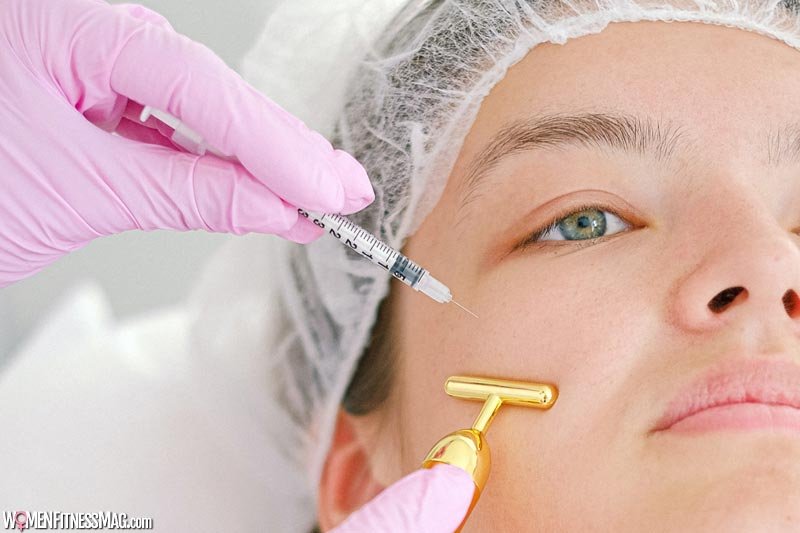Navigating the Pitfalls of Uneven Botox: Causes, Solutions, and Prevention : We’ve all heard the horror stories and seen the fail photos: celebrities and regular folks alike who supposedly underwent Botox treatment, expecting a nicely plumped lip or fewer forehead wrinkles — and instead were left looking a lot less like they wanted to. But was Botox to blame?
Not necessarily. While any procedure carries some risk of a side effect, properly administered Botox injections are typically both safe and effective. The key is having your Botox procedure done by a trained professional. Ideally, your practitioner has completed extensive and intensive specialty training, such as the Botox training course that’s taking place in Cincinnati. A trained professional who has learned how to properly inject Botox will vastly improve the odds of a successful result.
How to Prevent Botox Problems
After someone has a Botox treatment, there are some side effects one would expect with this type of procedure, such as localized swelling or a mild headache. This kind of self-limiting side effect will usually resolve on its own without any outside intervention necessary.
The challenge is when Botox is improperly administered. If the small dose of botulinum toxin that comprises Botox begins to spread throughout the body, it can cause botulism, a type of food poisoning that is highly toxic. This is rare, but can happen.
Here are some important red flags to consider when you’re considering getting Botox treatments:
- Credentials. Has the health care practitioner been trained in how to safely and effectively administer Botox injections? Is the practitioner working under medical supervision? Ask to see licenses or certificates of training completed. Ideally, these will be hanging on the wall of the office, clearly visible for all patients to view.
- Cost. Medical procedures are never something to bargain shop for. You want the most skilled and experienced practitioner available to do your procedure. If you wouldn’t choose a cut-rate dentist or doctor, give your Botox procedure the same respect. It’s still a health procedure being applied to your body.
- Patient volume. This is also a situation where a crowded schedule is a good thing, even if it means you have to wait a few weeks for an appointment. A high-volume practice means an experienced practitioner and a fresh supply of Botox.
- Consultation. Your prospective Botox practitioner should sit down with you and discuss exactly what procedure(s) you want and the hoped-for outcome. An ethical practitioner will not agree to multiple procedures at one appointment, except in special circumstances, or validate unrealistic expectations for the results. In fact, an experienced practitioner may even feel you are not a good candidate for Botox at this time and will steer you in another direction.
What To Avoid Before and After Botox Treatments
So you’ve selected a qualified Botox practitioner with a thriving practice, made an appointment, and are looking forward to looking younger, with those fine lines and wrinkles smoothed out. Be sure to adhere to these guidelines so you receive the best possible outcome:
- Tell your practitioner about medications. If you’re taking blood thinners, your health practitioner may suggest another form of treatment, since blood thinners can increase the risk of complications for Botox injections.
- Just say no to alcohol. Even if you’re a very light drinker, alcohol and Botox don’t mix. Alcohol dehydrates your skin, which can make it harder for the injections to work effectively. Instead, switch to water for several days before and after your treatment to help your skin stay as healthy as possible for the best results.
- Skip the workout. This is one time you have a handy excuse not to go to the gym. Following your Botox treatment, you should avoid the sun and any strenuous exercise for at least 24 hours, again to give your body time to absorb the injection and adjust. Even yoga is ill-advised after Botox.
- Touch your face gently. If you’re accustomed to vigorous face washing or rubbing in creams at night, refrain from these activities after your procedure. Simply pat your face lightly.
In an era when we’re living longer and healthier than ever before in history, it’s completely understandable that everyone wants to look and feel their best for as long as possible — especially when competing with younger people in the job market! Choose your Botox practitioner wisely, and you’ll be looking fresh-faced in no time.
Related Videos about Navigating the Pitfalls of Uneven Botox: Causes, Solutions, and Prevention :
Navigating the Pitfalls of Uneven Botox: Causes, Solutions, and Prevention
botox injection sites to avoid, can botox cause cancer, botox neurological side effects, side effects of botox on forehead, botox articles,




